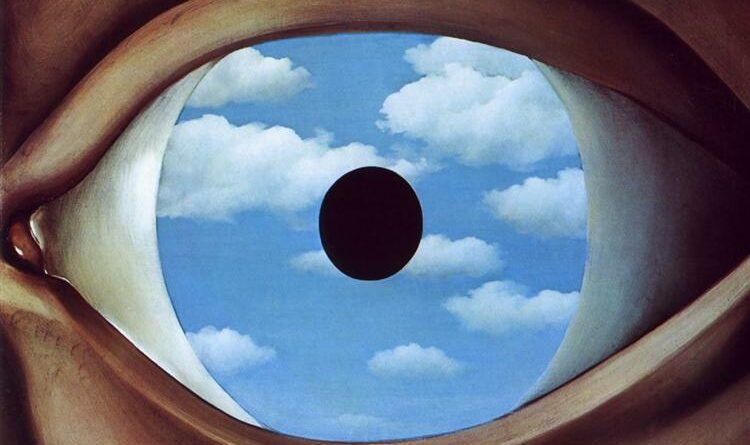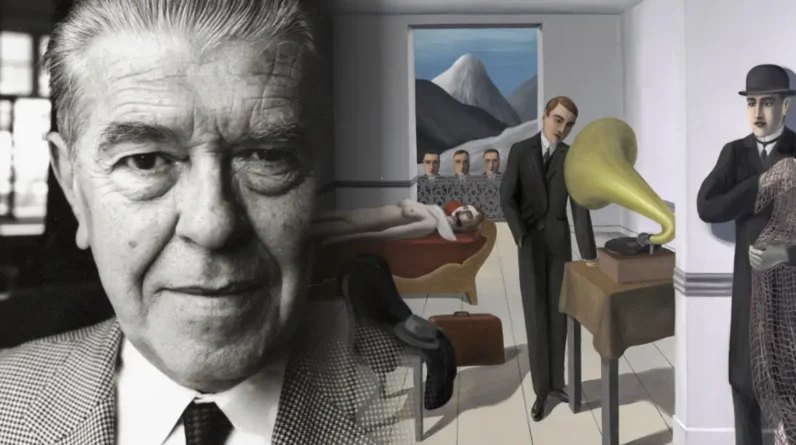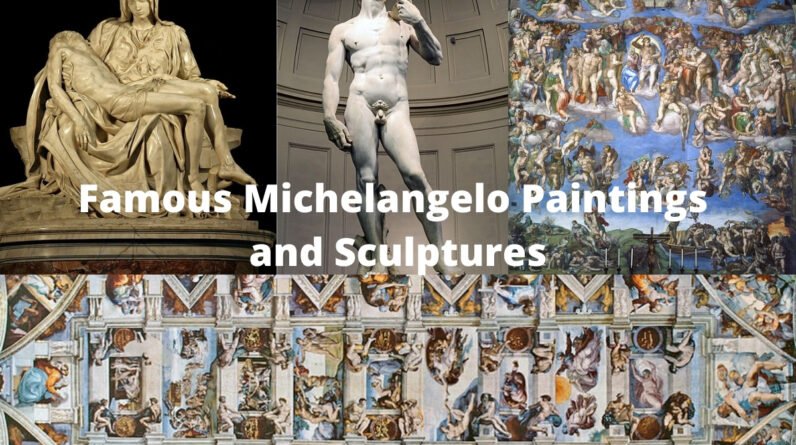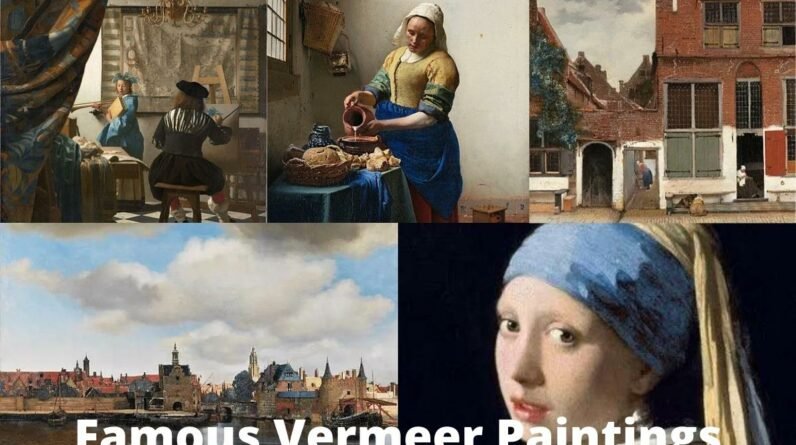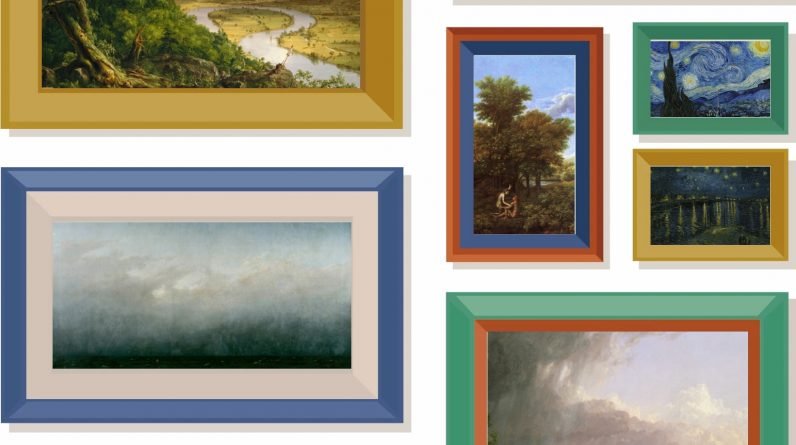
If you are looking for the most famous landscape paintings, here's a list of some of the most popular works by some of the most talented artists. From The Starry Night by Vincent van Gogh to Impression Sunrise by Claude Monet, these masterpieces capture the beauty of nature's most picturesque places. Discover what makes them so appealing, and see if you can guess the artists' names. Then, you can take a closer look at their works and decide which one you like the most.
The Starry Night by Vincent van Gogh
Starry Night is an oil-on-canvas painting by Vincent van Gogh. The artist created the painting in June 1889. The painting shows the view outside his asylum room's east-facing window before sunrise. In the background, you can see an imaginary village. Van Gogh is best known for his paintings depicting the natural world. But in Starry Night, he took things a step further by depicting the scene of a lone village.
While the town is painted in dull colors, the sky is filled with a luminous glow. The steeple in the background symbolizes solidarity between people in the town and gives the impression of its size and separation. The painting's starry night sky is uniquely delineated by Van Gogh and is overflowing with whirling mists and sparkling stars. However, the artist chose to depict the night sky in a more contrasting manner.
In the background, you can see a quaint Dutch town surrounded by a dazzling sky. The night sky is a rare sight in our urban lifestyle, so the stars and moon are a welcome sight. The village is also peaceful during the night, as shown by the lone church steeple. The painting is not only a stunning work of art, but it also serves as a reminder of life.
What is the Story Behind Vincent Van Gogh’s Starry Night?
Vincent van Gogh Starry Night Analysis

The Hay Wain by John Constable
The Hay Wain by John Constable is arguably his most well-known work. It depicts the river Stour, which separates the counties of Essex and Suffolk. In the 1820s, the painting had a relatively modest sales price, but was so successful that it was exhibited at both the Royal Academy and the British Institution. In 1822, a French Art dealer named John Arrowsmith agreed to buy it. Constable had also sold his other works to Arrowsmith, who bought The Hay Wain and View on the Stour Near Dedham for a combined PS250. The sale of these paintings pushed Constable's popularity in France, where the work quickly achieved its current status.
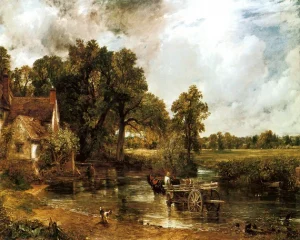
Impression Sunrise by Claude Monet
The colours in Impression Sunrise by Claude Monet are subtle and restrained, but the orange sunrise stands out from the grey, brown, and black of the surrounding scene. In fact, the orange hue is almost the same value as the surrounding greens. The contrast of hues and values is evident in the boat that is dark, yet the other boat shapes are lighter. This makes the entire scene appear more crowded than it actually is.
The port at Le Havre is the subject of Impression, Sunrise. Two small rowboats stand out against the red Sun, while fishing boats float in the middle ground. In the background, tall mast clippers are visible and a misty shape is visible as the sun reflects on the water. The artist used separate brushstrokes for each of the colors in Impression, Sunrise. In doing so, he creates a hypnotic atmosphere that makes the viewer feel as if they are actually there.

Starry Night Over the Rhône by Vincent van Gogh
“Starry Night Over the Rhône” is a common title for one of Vincent van Gogh's famous paintings. The painting depicts the nighttime sky over Arles, where the artist lived and painted on the banks of the Rhône. The work is a short walk away from his Yellow House, which was located on Place Lamartine. The Yellow House was van Gogh's home.
While Starry Night Over the Rhône by Vincent Van Gogh is perhaps not as well-known as his more famous rendition, it is still a major masterpiece. This version is displayed at the Musee d'Orsay in Paris and has been exhibited in many major museums. The radiant color palette and brushwork of the painting will capture your attention. The scene depicted in the painting is serene, and the figures are small but present.
The painting is a striking example of the artist's unique approach to illustrating the nighttime sky. In it, Van Gogh gives each element equal visual weight. For example, a horizontal brushstroke depicts the sky. A long vertical line might depict a road leading into town. Or a line may reflect the light of a city. These brushstrokes create a sense of motion, rhythm and unity.

Wheat Field with Cypresses by Vincent van Gogh
The composition of Wheat Field with Cypresses by Vincent Van Gogh is a study in contrasts. The warm yellow of the wheat field is offset by the cool blue of the trees, and the brushstrokes combine to create an atmospheric perspective. The artist combines both natural and man-made elements in his work, resulting in an unfailingly aesthetically pleasing painting. A study of Van Gogh's work will reveal how he made use of these elements to depict a world of conflict and contradiction.
The July version of Wheat Field with Cypresses was completed in one sitting, while the September version was painted over a larger canvas. Van Gogh used thin paint on the cypresses, while a thick impasto was applied to the foreground wheat. Van Gogh preferred zinc white over lead white for the sky. The paint used in the painting is cobalt blue and shades of yellow. Van Gogh's use of green and blue for the background reflects the underpainting. The pale straw superimposed on the blue is also characteristic.
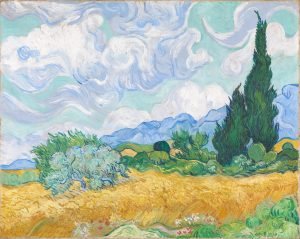
The Monk by the Sea by Caspar David Friedrich
The Monk by the Sea by Casper David Friedrich is an iconic work of Romantic art. The monk appears to be a model for the artist, with his flowing beard. The artist painted the monk in his studio, using the most evocative elements to create an expressive composition. Friedrich continued to alter the painting until he achieved the finished result. He used a variety of colors to further emphasize the monk's expression, such as white.
This masterpiece by Caspar David Friedrich explores the mystical aspects of nature. The lone wanderer is a common theme in German Romantic literature. Friedrich sought to express the mystical view of nature and claimed that the divine is everywhere. In his paintings, the artist portrayed rural landscapes and often spent long hours alone. The subject matter is often quite abstract, with no fixed object in focus.
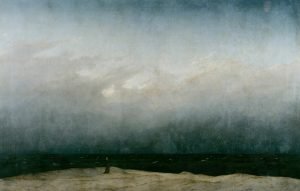
The Spring by Nicolas Poussin
The Spring by Nicolas Poussin is a beautiful oil painting that depicts the lush wooded landscapes of Eden. Poussin painted several similar paintings, including Adam and Eve in Earthly Paradise and Eve's Dream. These paintings are both religious and depict biblical stories. Despite their similarities, both are highly emotional, and the viewer is sure to have a hard time choosing a favorite.
The painting depicts Adam and Eve before their expulsion from Eden. The scene begins in dimly lit foreground, with luxuriantly vegetated wood. In the background, swans circle a pond, while mountains and meadows emerge from the horizon. The early morning sun filters through a patch of shrubs and rocks. The dazzling light reveals a scene that has changed into a world of pristine beauty.
This painting is part of the Genesis series and portrays the Garden of Eden during the early morning. The Creator is on the cloud at the upper right, while Eve points out the forbidden fruit. This painting is the first portrayal of the Garden of Eden before the fall, before the first sin was committed. The painting does not depict the snake, but there are several hints that this animal may have symbolic meaning. This painting is a stunning example of Poussin's work.
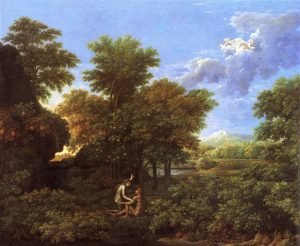
WANDERER ABOVE THE SEA OF FOG
Wanderer above the sea of fog is a painting by German Romantic artist Caspar David Friedrich. It was painted in 1818. Friedrich's work depicts a scene that evokes feelings of nostalgia and longing. It has become a classic work of art. Here are some of its most compelling features:
Although the painting dates to the 18th century, it still exhilaratingly captures the feeling of a time when art was dominated by political and social issues. It is important to recognize that this painting is not a creation of the artist's mind. Friedrich made the painting while the country was undergoing the transition from Neoclassicism to Romanticism. For this reason, it is often referred to as a work of art by a German.
Although Friedrich emphasized landscapes in his works, Wanderer above the sea of fog displays a sense of profound contemplation. The painting's stalwart figure and sublime scenery make it much more than a landscape. This is a painting that is truly enduring. If you love art and want to discover its true value, WANDERER ABOVE THE SEA OF FOG is a must-see.

The Oxbow by Thomas Cole
The Oxbow by Thomas Cole is perhaps the most famous landscape painting ever made. It depicts the bend in the Connecticut River and is a prime example of how westward expansion can benefit both the east and west. Its diagonal line and lush landscape are both iconic to the painting. It is also one of the earliest examples of landscape painting. While it shows the same view as many other landscape paintings, the Oxbow is particularly notable for its bold and colorful brush strokes.
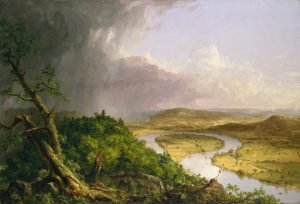
View of Toledo by El Greco
Despite the painting's gloomy mood, the View of Toledo by El Greco captures the city's beauty and architectural detail. Although this work belongs to the genre of city views, its potency comes from the way it interprets the city and the surrounding countryside. The restless swirl and lowering sky are among the most striking features of the painting. Many art historians believe that El Greco aimed to portray mysticism with this painting. In fact, it is possible to see some aspects of mysticism in this painting. The painting also captures the authority of the God.
The View of Toledo by El Greco is one the most famous landscape paintings by the Italian artist. This work depicts a view of Toledo, Spain, from the top of a hill. Its sky and landscape are completely absorbed in the painting, a combination of which gives the painting its dramatic effect. El Greco's clouds, however, appear to be about to unleash a storm on Toledo. The buildings, in contrast, appear to crawl across the canvas. In addition, the lines of the buildings are curved, which creates an impression that the city is in motion.

Sunlight and Shadow: The Newbury Marshes
A landscape painting from the National Gallery of Art, Sunlight and Shadow: The Newbury Marsh, by Martin Johnson Heade, is a stunning example of early impressionism. Heade acquired the painting from the National Gallery of Art. The National Gallery of Art acquired it in 1922. Heade was one of the first American artists to use the term impressionism. His work consists primarily of landscapes, and he often used natural subjects.
Heade's paintings of salt marshes and other seascapes were influenced by his passion for the natural world. His interest in the marshlands was first sparked by the poet John Greenleaf Whittier and by Bishop Thomas March Clark. Heade painted more than 100 subjects from the marshlands, which comprise one-fifth of his entire oeuvre. While Heade did not choose to use the term “wetlands” in his paintings, his subjects and style evoke the romanticism of his time.
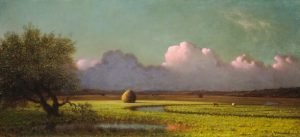
Related reading:
10 Most Famous Portrait Paintings
8 Most Famous Abstract Paintings


